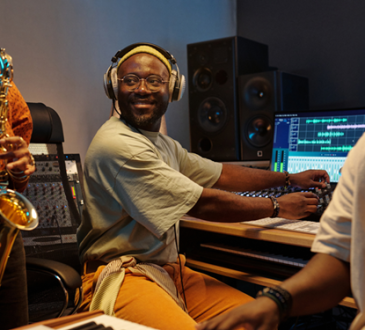
Selecting a preschool is one of the most important early decisions a parent makes. With many options for preschool in Singapore, the process can feel overwhelming. Every child learns differently, and the best fit may not always be the most popular or academically focused programme. Understanding your child’s learning style helps to narrow down suitable preschools that will support development effectively. Here’s how to approach the decision thoughtfully.
Observe How Your Child Engages With the World
Before looking at options, it helps to understand how your child interacts with people and activities. Some children are naturally drawn to movement, while others enjoy quiet play or stories. Others enjoy building or figuring out puzzles. These habits give insight into whether your child prefers visual, auditory, or kinaesthetic learning. Identifying these behaviours early helps parents choose the best preschool in Singapore and a programme that reflects their child’s natural tendencies.
Understand the Teaching Methods Used
Preschools in Singapore vary in their approaches. Some follow play-based learning, while others may focus on academic readiness. There are also Montessori and Reggio Emilia frameworks, which emphasise exploration and independent learning. For a child who enjoys structure and routine, a more traditional setting might work. For one who thrives in hands-on experiences, a play-based or inquiry-driven curriculum could be more effective. It is important to ask how lessons are delivered and how different learning needs are addressed.
Match Activity Types With Learning Strengths
Children who respond well to stories or conversations may benefit from programmes that prioritise language and verbal interaction. Others who enjoy drawing, sorting, or working with physical objects may prefer more tactile experiences. While quality preschools offer a mix of activities, the balance between movement, creativity, and academics can vary. Visiting the centre to observe class flow can provide insight into how closely it aligns with your child’s preferred learning environment.
Ask About Daily Routines and Transitions
For some children, structure is essential. Knowing when and where each activity takes place helps them feel secure and focused. Others may do better with flexible schedules that allow them to transition at their own pace. The best preschool in Singapore for your child is one that considers how routines affect learning. Ask about how the centre manages transitions, how activities are introduced, and whether children have time to choose activities that interest them.
Evaluate Class Size and Interaction
Some children thrive in smaller groups, where they can build strong connections with peers and teachers. Others are more social and adapt well to larger classrooms. The size of the class can influence how your child participates, listens, and plays. Larger centres might offer more activities, but smaller settings could provide a more personalised learning experience. Observing how teachers interact with the children can help assess whether the environment will support your child’s engagement.
Check for Teacher Support and Observation
Teachers who observe and understand learning differences can help each child grow at a steady pace. A strong preschool does not force all children into the same mould. Instead, it offers flexibility in how goals are reached. During a school visit, ask how teachers track progress, support quieter students, and guide children with different strengths. A supportive learning environment depends heavily on how well teachers adapt to individual needs.
Review the Environment and Layout
The physical environment matters, especially for young learners. Some children need calm spaces to concentrate, while others require movement and stimulation. A well-designed preschool allows children to engage in different types of play and learning at their comfort level. Look for open layouts, reading corners, structured zones, and outdoor play areas.
Consider the Long-Term Fit
Choosing a preschool is not just about the current year. It is also about setting a tone for future learning. A good preschool nurtures curiosity, communication, and confidence. While test results may not be the focus at this stage, early learning experiences can shape a child’s attitude toward school. When a child feels understood and supported, it sets the foundation for stronger academic habits in later years.
Talk to Other Parents and Observe Your Child’s Response
While each child is different, hearing from other parents about their experience with a preschool can provide useful insights. More importantly, observe how your child reacts during trial sessions or centre visits. A positive response is a good sign. If your child seems comfortable, curious, or happy in the environment, it may indicate the preschool is a good fit for their learning style.
For more information about preschool education in Singapore, contact E-Bridge Pre-School today.




